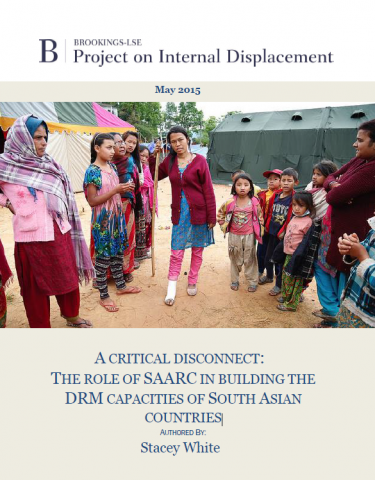A Critical Disconnect: The role of SAARC in building the DRM capacities in South Asian countries


This study considers the different elements of the South Asian Association for Regional Cooperation’s (SAARC) DMC’s efforts over the last decade and to assess their impact in supporting the national capacities of member states. This study evaluates the development of DRM national architecture and activities in two case study countries in South Asia, namely India and Nepal, to get a better sense of where these countries stand with regard to DRM capabilities and to understand what role, if any, regional approaches have had in reinforcing national systems.
As this paper went to press, a 7.8 earthquake hit Nepal on April 25, 2015, the most powerful in 80 years, killing at least 7,000 persons (and possibly as many as 10,000) and affecting an additional eight million. This paper does not endeavor to assess the full extent of earthquake losses or the emergency relief efforts still unfolding in Nepal at the time of its publication. Instead, it maps out the national architecture and systems that were in place in disaster-affected country and across the sub-region prior to the disaster.
© 2015 Brookings Institution
